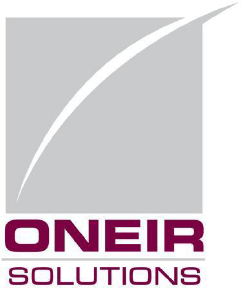There will be times, despite the best efforts that you will need to contact a customer for payment. All the credit policy or interest charges in the world won’t change that.
Once again having a clear policy on when to start collections is critical to getting payment faster. Your policy should cover:
– How many days after the due date should the customer be called?
– How often should a follow up call be made if payment is not received?
– How many days overdue will trigger each escalation of action, such as denial of further credit, decrease of credit limit, higher frequency of calls, etc?
– In the worst case scenario, at what point should final action be taken, threatened. (Ex. Sending to collections or seeking recourse in the courts.)
Whether you have one person or a team responsible for Accounts Receivable collection, it is essential to have guidelines in place so that your customers do pay what is owed but do not feel harassed. It can be a fine line, just one overzealous or aggressive collection call can permanently damage the relationship with your customer.
Oneir provides a number of tools to help the AR collection staff keep track of what customers are overdue, quickly determine what the customer’s history indicates about how quickly they pay, who has been called and schedule a follow up.
Reporting specifically designed for collections.
First there is the Accounts Receivable Collections report. This is essentially the standard Aged Accounts Receivable Ledger with some special features. It excluded customers with a credit balance, and highlights with a * the customers whose credit is currently “On Hold”. This cuts down on mistakes made by calling a customer that may have an overdue invoice, but also has a credit balance. It also helps prioritize the customers that have triggered a hold on their credit.
The other plus on this report is the ability to focus on only customers with outstanding receivables greater than a specific ageing; say 45 days.
Review the customer payment history.
Armed with the AR Collection report an employee has their call sheet for collections. Before calling they can further arm themselves with information on the customer payment history. Instead of lengthy research in to the customers’ transaction history, Oneir calculates the average number of days it takes that customer to pay. This is just one of the fields shown every time a customer is accessed in “Display customer account status”. This will tell the collection staff in just a few keystrokes what the customer’s payment history is like. If it is normally very good a softer approach may be taken. If the number of days to pay is higher, a more hardline approach may be more effective. This is also a good tool to use when reviewing a customer’s credit!
Keeping track of who has been called, what was discussed and when to follow up.
The third and perhaps most essential collection tool within Oneir is the relationship management features, specifically the Client Contact Action or F12 notes. This allows collection staff to log when each call (date and time) was made to the customer, who they talked to and what was discussed or promised. Using the same note they may also set a follow up date, which can be searched and reported on for call backs. Using the notes is extremely valuable on many levels. It can prevent the duplication of effort, wasting time and frustrating the customer. If someone needs to know what the status of collection is, no need to track the staff responsible down, it is right there in the notes. The collection staff’s life is also made easier, they will have record of what was promised and discussed, no need to rely on memory, nor remember when to phone back and follow up, it is all there in the notes!
Of note, any invoices or statements previously e-Mailed to the customer are recorded as a Client Contact Action note, with the date, Invoice Number and e-Mail Address of the recipient. So if your customer says they didn’t receive the invoice or statement, you can verify it went to the correct e-Mail and resend while they are on the phone.
By the way, you should record in the Customer’s Note Pad in Oneir, the contact details for all your customers, including the individuals responsible for processing outstanding Accounts Receivables payments.
Read Accounts Receivable Management: Part III – Using Overdue Interest To Encourage On Time Payments
Read Accounts Receivable Management: Part II – Credit Policy
Read Accounts Receivable Management: Part I – Overview


